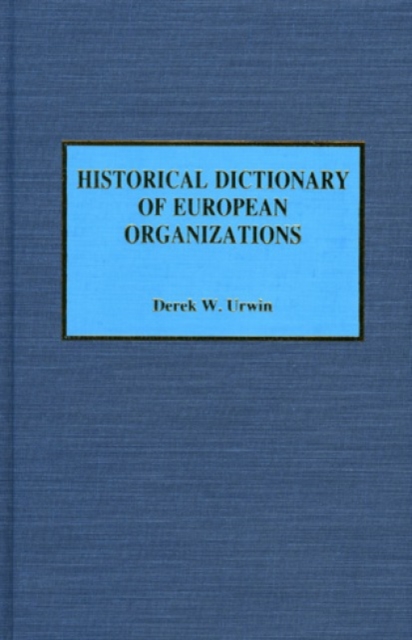
Historical Dictionary of European Organizations Hardback
by Derek W. Urwin
Part of the Historical Dictionaries of International Organizations series
Hardback
Description
The modern international organization is a European invention.
The fragmented nature of the continent, with national boundaries shifting over time, was always paralleled by interactions between states. In the twentieth century the historical format of treaties and military alliances was supplemented by organizations for economic collaboration and associations working for greater political cooperation and even unity. Despite, or perhaps because of, the bipolarization of Europe during the Cold War, the number of organizations mushroomed after 1945. Yet the picture has not just been one of constant increase: increasing complexity has occurred within an ongoing process of change. With the ending of the Cold War the rate of change has increased: long-established institutions have had to reconsider their purpose and reason for existence, new groupings of states have emerged. With several hundred entries this work offers an introduction to the complex and changing world of European international organizations. It outlines and disaggregates into their several different structures and activities the major institutional actors such as the European Community and the North Atlantic Treaty Organization, as well as providing information on numerous lesser-known bodies that rarely make the world's headlines. The institutional information is supplemented by accounts of major events and activities and descriptions of individuals who have been influential in shaping the international organizations. A chronology of events will aid the reader to fil the factual description into an overview of what happened when, a list of acronyms offers a guide to the complexity of organizations, and a thematically-structured bibliography provides a guide to further reading.
Information
-
Only a few left - usually despatched within 24 hours
- Format:Hardback
- Pages:422 pages
- Publisher:Scarecrow Press
- Publication Date:01/11/1994
- Category:
- ISBN:9780810828384
£79.00
£28.35
Information
-
Only a few left - usually despatched within 24 hours
- Format:Hardback
- Pages:422 pages
- Publisher:Scarecrow Press
- Publication Date:01/11/1994
- Category:
- ISBN:9780810828384










